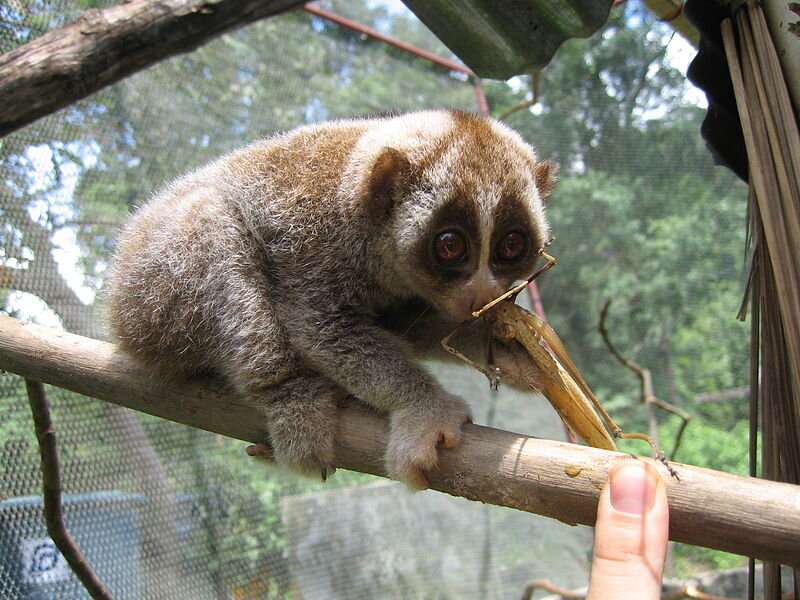Primate venom sheds light on why so many people suffer cat allergies

Research into the toxin of the world's only venomous primate, the slow loris, is shedding light on the potential origins of the allergic qualities of cats.
An international team, led by University of Queensland's Associate Professor Bryan Fry, has been studying slow lorises at the Cikananga Wildlife Rescue Centre in Indonesia.
"Slow lorises are the only known primates with venom and they've been virtually unstudied," Dr. Fry said.
"Despite being a mystery to science, they're commonly smuggled from the wild and sold in the pet trade, so our rescue centre research was the perfect opportunity to do some good in a bad situation.
"Generally slow lorises use their venom to fight with other slow lorises, causing very slow-to-heal wounds.
"But, when humans are bitten, the victim will display symptoms as if they're going into allergic shock."
He said this similarity was even more striking when studied in the lab.
"We analyzed the DNA sequence of the protein in slow loris venom, discovering that it's virtually identical to the allergenic protein on cats.
"Cats secrete and coat themselves with this protein, and that's what you react to if you're allergic to them.
"Our theory is that since this protein is being used as a defensive weapon in slow lorises, it makes sense that cats may be using the allergen as a defensive weapon too.
"The fact that so many people are allergic to cats mightn't be a coincidence.
"This may have been evolutionarily selected for in the wild as a defense against predators.
"This ability to trigger allergy as a weapon mightn't be something restricted to slow lorises, but may have separately evolved in cats at the same time.
"This is a fascinating hypothesis that we are looking to test in future research."
Dr. Fry said the team regarded this as another elegant example of evolution in action.
"This finding shows how inventive nature is when developing new toxic arsenals," he said.
"The human allergy to cats is so prevalent that it would be a remarkable coincidence if this wasn't an evolved defensive weapon, like the same protein used by slow lorises.
"Your pet cat wouldn't know it, but it may have evolved a toxic defense to keep predators as far away from it as possible.
"Similarly, this line of research opens up other fascinating research areas, such as the allergies to ants and bees also being something that has been selected for by evolution—where the victim's immune system is being high-jacked.
"This study is a great example of what makes science so wonderful, where every answer spawns several new and interesting questions."
The research has been published in Toxins.
More information: undefined Scheib et al. The Toxicological Intersection between Allergen and Toxin: A Structural Comparison of the Cat Dander Allergenic Protein Fel d1 and the Slow Loris Brachial Gland Secretion Protein, Toxins (2020). DOI: 10.3390/toxins12020086
Provided by University of Queensland





















